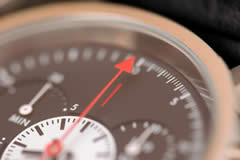Just 5 Minutes - Check Engine Oil and Coolant Fluid - Vol.205
Regularly checking your engine oil and coolant fluid can save you hundreds of dollars in vehicle repair and maintenance costs over the lifetime of the vehicle. It is easy to neglect these essential car functions as they are tucked away under the hood, out of sight and out of mind; the better you care for your vehicle, the better it will take care of you. The process to check engine and coolant fluid can take just 5 minutes and is very easy to do even for the most novice car owner. Here are some basic instructions that will take just 5 minutes and can help you better understand the needs of your vehicle.

Step #1. Gather Your Supplies
The only things you are going to need to check the engine oil and coolant is a paper towel, the owner's manual, and of course the car keys to get into the vehicle.
Step #2. Open the Hood
Don't check the engine oil and coolant immediately after you drive, wait for about an hour as it will still be very warm and may perhaps give you false readings. Give your car some time to cool down and pressure might have built up in the coolant tank that could burn you. Once your car has cooled down, head over to the drivers seat area to open the hood.
Reach your hand underneath the steering wheel closer to the foot pedals. There should be a latch down below that you can pull and that will release the lock holding down the hood. Feel around or reach your head down there, and if you are unable to find it, consult with your vehicle's manual to determine its location. Once you have located this latch, pull it forward toward you and you should hear a clicking noise on the front of the vehicle.
Step #3. Locate the Dipstick
First, check the oil by located what is known as the dipstick. This usually looks like a ring or loop?often times it is yellow?that will have engine oil inscribed on the side. Consult the owner's manual if you are having trouble finding which one is the oil filter. Put your finger through the loop and pull out the dipstick, which should be a long metal rod. Use the paper towel to wipe away any oil on the stick to give you the most accurate reading. Then return the dipstick into its container.
After you have replaced the dipstick and let it sit for a few seconds, remove the dipstick again and locate the two notches on the stick without wiping off the oil this time. The oil should be between the two lines indicating that it is at the appropriate level; if it is not, oil must be added and an oil change is recommended. The second thing you should do is to evaluate the color of the oil on the stick. If the engine oil is a black or dark brown color, it probably needs to be replaced.
Return the dipstick to the compartment and proceed to step four to check the engine coolant.
Step #4. Locate the Coolant Container
To locate the coolant container, try looking for a reservoir located on the left or right side of the vehicle toward the back, closest to the windshield. Every vehicle is different, so again, it is always best to check with your specific vehicle models' manual. On the reservoir, some vehicles will have two lines for maximum and minimum, others will just have a single line indicating either "full" or "cold." The coolant should be filled as close to the full line as possible.
If the coolant is low, you can purchase additional coolant from any auto parts store. Open the container and pour it in yourself to get as close as you can to the "full" line without going over. In serious cases where your engine is overheating or you just don't have the ability to get engine coolant anytime soon, you can add distilled water to the coolant tank, but try avoiding this if you can as it can as coolant has the benefit of keeping your vehicle from rusting.